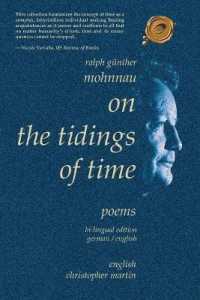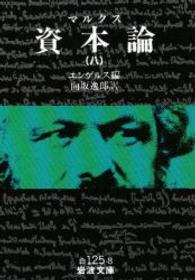Full Description
"The best educators are the best learners. It's all about teaching, learning, and feedback, and this book brings common sense to common practice."
—Raymond J. McNulty, Senior Vice President
International Center for Leadership in Education
"At last, a diagnostic classroom observation tool that moves beyond generic criteria for examining teaching and learning. This is a must-have resource for teachers, administrators, and professional developers who want to look beyond the veneer of 'best practice' and use evidence-based, content-focused criteria to get to the heart of deep, conceptual teaching and learning."
—Page Keeley, Senior Program Director
Maine Mathematics and Science Alliance
A complete instructional leadership system for improving classroom practice!
Providing effective classroom evaluation is a critical function of authentic instructional leadership. Diagnostic classroom observation (DCO) is a research-based system that helps principals and other supervisors carry out classroom observations and evaluations to support effective teaching practices.
Based on the Vermont Classroom Observation Tool, the DCO model covers the entire supervision process, from preconference analysis to postconference follow-up, and includes protocols for observing math, science, and literacy instruction. Program users can determine classroom quality and student engagement by evaluating four critical aspects of instructional practice: lesson planning, lesson implementation, lesson content, and classroom culture. Additionally, the author supplies readers with:
Classroom observation forms to help identify instructor strengths and weaknesses
Scoring forms to assist with the final evaluation and review process
Real-world vignettes that clearly illustrate key indicators of quality teaching
Methods for matching student learning assessments with appropriate instructional strategies
Guidance for introducing DCO into any school or school district
Diagnostic Classroom Observation offers principals and teacher leaders a thoroughly tested and validated classroom observation system that improves instructional performance and enhances student learning.
Contents
Preface
The Structure of the Observation Tool
Acknowledgments
About the Author
1. Defining the "Technology of Good Instruction"
Assumptions Underlying DCO
Intended Uses
Final Thoughts Before Proceeding
2. Ending the "Process Versus Content" Argument
The Math/Science Version of Diagnostic Classroom Observation
The Implementation Criteria
The Content Criteria
The Classroom Culture Criteria: Using the Math/Science Version
Discussion Questions
Concluding Thoughts
3. Learning to Read and Reading to Learn
Section 1: Learning to Read
Section 2: Reading to Learn
Reading and Writing in the Content Areas
Section 3: Using the Literacy and Composite Versions
Discussion Questions
Concluding Thoughts
4. Classroom Culture: Treating Everyone as You Would Be Treated
The Classroom Culture Criteria
Applying the Classroom Culture Criteria
Concluding Thoughts on Equity of Access
5. Assessing Assessment
The Bullets: Characteristics of Good Assessment
Choosing the Right Assessment for What You Want to Know
Creating Valid Constructed Response Items
Learning to Assess Assessment
Concluding Thoughts
6. Putting It All Together
Examples: Why "Pretty Good" Is Not Good Enough
Putting It Together for Yourselves
Discussion Questions
Concluding Thoughts
7. Using Diagnostic Classroom Observation to Improve Instruction in Your School
Section 1: Learning to Use DCO
Section 2: Adding DCO to Your Supervisory Practice
Tools for the Principal
Introducing DCO to Your Teachers
Concluding Thoughts
Appendix A. Questions for the Preconference: Math/Science Version
Appendix B. Questions for the Preconference: Literacy Version
Appendix C. The Math/Science Version
Appendix D. The Literacy Version
Appendix E. The "Cross-Walks"
Appendix F. The Score Sheets
Appendix G. The "Cheat Sheets"
Reference
Index







